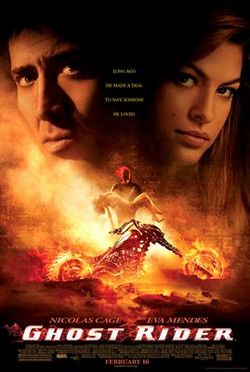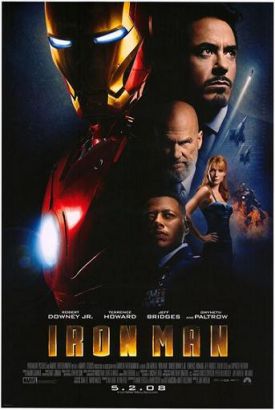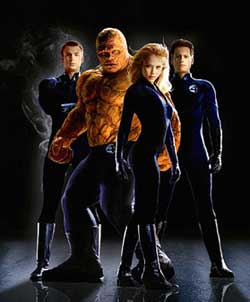Comics /
Spotlight /
Knowledge and Scholarship
Marvel History Part 8 - Marvel Today
By Frederic Haddox
August 31, 2008 - 13:51
Marvel Comics finally withdrew from the Comic’s Code of Authority in 2001. The subsequently developed and used their own ratings system. [14] By this time, the Code proved to be outdated. Marvel Comics had already shown its ability to develop titles which varied in degrees of maturity that can accommodate younger and older readers. In 2001, Marvel Comics released its
Max series which was aimed specifically for mature audiences and marked with an “Explicit Content” label. This series included stories featuring Blade, Luke Cage, Thor, X-Men and Punisher.
Also there was a return to horror titles featuring stories by Edgar Allen Poe and H.P. Lovecraft. [18]
Ultimate Marvel was another imprint targeted to more mature audiences. The first title featured Spider-man. In order not to confuse new readers, new origins were provided for the characters. The alternate universe known as “
Earth 1620” would also allow artists and writers more freedom to create without constantly considering past storyline.
By placing this realm within a “Multiverse,” Marvel Comics created an insurance policy that deemed writers unaccountable for the ultimate fate of their renditions of those characters. The Max label also presented the first comic book title featuring a homosexual character. [19] Although the
Rawhide Kid, originally a golden age comic title, wasn’t the first homosexual Marvel Comics characters (
Northstar of Alpha Flight and the Ultimate version of Colossus of the X-Men) , it still caused controversy. The limited series was criticized for containing sexual innuendos as well as not being deserving of an “explicit content” label. [20]
Even though the Comic Code gave Marvel Comics more freedom to publish more mature works, it still didn’t neglect younger readers. More and more younger readers had a growing affinity towards Japanese animation and comic books (known as manga). As manga sales continued to climb in bookstores, Marvel Comics decided to tap into this market.
Marvel Mangaverse, released between 2000 and 2002, was designed to attract fans of Japanese manga. [21] Although the illustrations included large eyed characters, speed-lined backgrounds, contrasting visual representations for humor and drama which are typical to manga technique, the stories culture perspectives were different. Marvel Comics, refusing to surrender its desire to be a part of the manga market, released the Tsunami series in 2003. Unfortunately, this series failed to a last a year and was soon replaced by
Marvel Age. [2] Marvel Comics changed the format to the smaller digest size.
Similar to the Ultimate series,
Marvel Age stories were set in an alternate universe known as Earth 20051. [22]
Marvel Next was yet another unsuccessful attempt to reach younger viewers. It featured characters such as the
Young Avengers,
Runaways and
Amazing Fantasy. [2] Marvel Comics faced yet another dilemma concerning younger readers.
Though demographically it’s wise to release stories that are suitable for younger readers, the very act itself can “alienate” them from Marvel Comic’s mainstream universe. This could be worsened when characters are made especially for young readers that differ from the stories that created their interest in Marvel Comics’ characters to begin with.
Perhaps this was a consequence resulting from Marvel Studio’s blossoming film presence. In 2002, the sequels to
Blade and
Spider-man were released. Despite the success of the second Blade film,
Spider-man 2 eclipsed the film industry. Breaking many box office records, the film grossed 146.7 million dollars within the first week. [24]
Its success was soon followed by a lawsuit filed by Stan Lee against Marvel Studios. Stan Lee argued that Marvel Studios had failed to pay the 10% of all earnings made from all TV and film products involving Marvel Characters which were contractually agreed upon in 1998. [25] Marvel Studios argued about a discrepancy in terms of “profit” versus “earning.” [2] The court finally awarded Stan Lee in 2007 forcing Marvel Studios to honor the former contract.
The continuing presence of Marvel characters in the home and computer game market has definitely benefited Marvel Comics. Since the first
Spider-man game that appeared in the mid 1980s, characters such as Hulk, Avengers, X-Men have been a part of every game console and computer system. The Activision game company published a series of games based on the
Spider-man films. After the third installment, the game still has proved popular. In 2006, Activision published Marvel Ultimate Alliance. Unlike the Capcom series,
Ultimate Alliance exclusively involves up to 80 super heroes and villains from the Marvel Universe. [31] This game proved so successful, that a sequel is already in the works.
House of M was another crossover series. The eight-issue series contained storylines that involved five different titles that tied into 25 issues. [31] Originating as a continuation of two other series
Planet X and
Avengers Disassembled,
House of M seemed to be a crossover from a crossover. The series appeared as an attempt to bring storylines, characters and the mutant population to a more manageable level.
Perhaps the largest comic book event of the millennium is the
Civil War series. The story, which began in 2006, was a seven issue series that revolves around the Superhuman Registration Act. This was a government mandate requiring super heroes and villains to formally register themselves as civil servants. Although those who registered would receive additional training and a monthly stipend, they had to reveal their secret identities. [27] Superheroes, who built their lives on the protection of others, became condemned by those same people.
The extremely original approach caused many characters to re-evaluate their purpose. A resistance movement was led by Captain America against the government movement led by Iron Man. In 2007, the series dramatically concluded with the death of Captain America. [2] Although the series was only seven issues, over 40 related tie-ins and subsequent features were involved.
Marvel Comics launched an online comic book archive site entitled Marvel Digital Comics Unlimited. This site gave readers access to 2,500 back issues of Marvel Comics for a monthly fee. [1] Since the release of the second
Blade and
Spider-man films,
Hulk,
X-Men,
Punisher,
Daredevil,
Elektra,
Fantastic Four and
Ghost Rider have appeared on the big screen. [29]
In May 2008, the film
Iron Man made over 100 million dollars during its opening weekend. The film ranked 10th largest opening of all time and fourth largest opening for a film based on a comic book. [30] Another rendition of Hulk was released a month later.
A new animated series entitled
Wolverine and the
X-Men will be released in the fall of 2008. [36] Film director John Singleton, known for dramas such as
Boyz N tha Hood and
Higher Learning, plans to produce films featuring the
Black Panther and
Luck Cage. [29]
A film featuring
Wolverine is scheduled for release in 2009. [29] Stan Lee, who has diminished his ties with Marvel Comics in the early part of this decade, continues to be labeled “chairman emeritus.” [1] Recently he accepted the offer to create a line of titles for Virgin Comics.
The world of Spider-man has taken another turn. Peter Parker’s Aunt May died as a result of event that occurred in the Civil War saga. Spider-man made a deal with a character called Mephisto. In exchange for reviving Aunt May, Spider-man had to return to a time long before his marriage to Mary Jane. [30] Beginning from
Amazing Spider-man #545, Spider-man will live in an altered reality that relinquished over 20 years of storytelling. Despite the numerous criticisms from readers, it has been proven that Marvel Comics will respond. For responding, to whatever occurs, is the defining standard that has and always will set Marvel Comics apart from all others in the comic industry.
Last Updated: January 17, 2025 - 08:20


